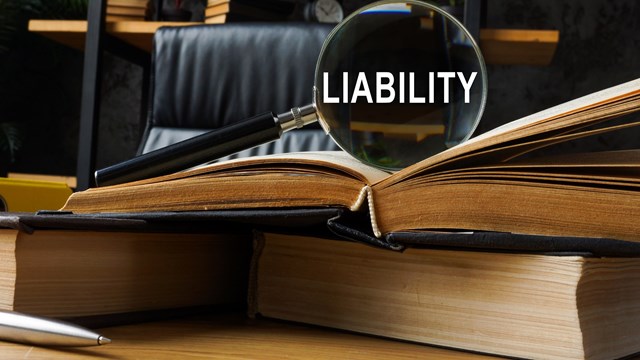
Insurance sounds like a simple concept: you pay a premium to your insurer, and then when you file a claim, your insurer pays you. Simple. Insuring a co-op or condo building shouldn’t be much different than insuring yourself—just on a bigger scale, right?
Not quite. In reality, making sure your building is properly insured is a multi-layered process that board members should take the time to understand. Having the right kinds of insurance and the right amount of coverage could be vital for your building’s financial—and sometimes physical—survival. A solid understanding of what comprises a typical building policy can help your board protect your unit owners and shareholders, as well as the investment they’ve made in their homes.
The Right Package
According to Barbara Strauss, executive vice president of York International Agency in Yonkers, a condo or co-op’s policy begins with what is called a package policy, which consists of property insurance, boiler and machinery and general liability coverage. Property insurance includes coverage of the building, business income and extra expenses and building ordinance coverage. Building ordinance covers the undamaged portion of a building in the event of a catastrophe, such as a fire. If, for example, 80 percent of your building were to burn down, the undamaged portion wouldn’t be covered without building ordinance coverage.
Strauss adds that reconstruction may require updating a building’s system sprinkler, or adding handicapped-accessible entrances. Those are known as increased cost of construction coverage, and is covered through building ordinance coverage.
The package should also include flood and earthquake insurance and, as part of a general liability coverage, non-owned and hired car coverage. That protects the building if an employee gets into an accident while driving his or her own car while working for the business.
Beyond that package, Strauss says buildings also need an employee fidelity or dishonesty bond, also called fidelity bond coverage, which according to Strauss, covers illegal conduct on the part of building employees, such as theft of monies, securities or other properties that belong to the condo or co-op association.
Strauss also stresses the importance of directors and officers or D&O coverage for board members—which protects them from liability in the course of doing their jobs as directors—worker’s compensation, and New York State disability coverage.
Jane Rosen, assistant vice president of Sterling & Sterling, Inc., an insurance brokerage firm in Woodbury, N.Y., agrees. “The board is a decision-making body that affects the economic and physical safety of shareholders and people that do business with the corporation,” she explains. That position alone means that board members take on certain liabilities when they agree to serve.
For that reason, Rosen warns boards to look at the exclusions in their policies very carefully. “Not all D&O policies are the same,” she says. “Your policy can be worthless if not worded properly.”
Rosen goes on to say that if a board doesn’t have the proper insurance, it may find itself defenseless in legal proceedings. “The defendants would have to dig into their own pockets and pay for legal expenses that can run into six figures.”
A Closer Look
According to Alnoor Ladha of Vanderbilt Properties Insurance Brokerage in Manhattan, the main components of a building policy are property, general liability, boiler and machinery, crime/fidelity, workers compensation and disability. Beyond those policies, Strauss and Ladha say buildings need the additional liability coverage that comes in the form of umbrella coverage.
Ladha says property insurance covers first-party losses, general liability covers third-party claims (which primarily arise in the form of slip-and-fall claims). A standard general liability policy provides about $1 million per occurrence, or $2 million in aggregate coverage.
“When you have a general liability policy and there’s one occurrence, somebody trips and falls, he or she would be able to claim up to $1 million. If there are multiple occurrences, if two or three people fall within that policy period, then you have a limit of $2 million…that’s the maximum they will pay in a given policy period [for all slips and falls].
Beyond that coverage, insurance companies also offer umbrella liability, which is additional liability coverage beyond the standard $1 million policy.
“If you have $1 million in primary general liability coverage, that only covers you for up to $1 million,” Ladha says. “In today’s litigious world, $1 million in coverage sometimes [is not] sufficient, because the legal fees alone can eat up the million-dollar limit. So we provide our clients with up to $200 million in excess umbrella coverage.”
That same principle applies to directors and officers coverage, which covers claims made against the board for mistakes or mismanagement. Generally speaking, Ladha says a building will have $1 million of coverage and can buy up to $200 million in umbrella coverage in addition to the initial D&O coverage.
“The umbrella is an excess liability policy,” adds Strauss. “It is an inexpensive way of increasing your liability limits over your general liability, which is your trip and fall coverage, and your directors and officers’ liability.”
Determining Cost
A lot of factors go into determining how much a building will pay for its coverage.
“It all depends on the amount of insurance you carry, the number of units you have, the size of the building, the height of the building, where the building is located, there are many factors that go into that,” Strauss says.
Strauss adds that before 9/11, the industry was seeing some rate reductions, but terrorism concerns have resulted in rates going up. She adds that larger buildings may see bigger increases than smaller ones but overall, she says prices are staying pretty level.
“As of now, I think the market is pretty stable—I think prices are stabilizing,” she says. “I don’t think you’re going to see the big increases you saw years ago.”
The Board’s Role
Both Strauss and Ladha say it’s important—if not vital—for board members to take an active role in learning about their building’s policy and understanding it.
“I think buildings should be aware of whether they’re carrying the proper amount of insurance,” says Strauss, “because they have a fiduciary responsibility to the shareholders. They should have someone come in and explain the insurance to them and make sure they are properly insured to value.”
“If the building is undervalued and some damage happens…then you’ll have some serious problems—there wouldn’t be enough money from the insurance carrier to repair the building,” Ladha says. “So the board has to be very cognizant of the limits that the insurance policy will provide. It’s the same with the board’s directors and officers policy; these are unpaid volunteers, and if they don’t have enough D&O coverage, then a claim can be brought against them personally. They need to make sure they have a good D&O policy that will defend them against suits arising out of the decisions they make on behalf of the building.”
Strauss says that insurance companies provide boards with a schedule of insurance, which is a summary of all of the building’s coverage. The board should then review its building’s insurance with a broker to review the schedule. The insurance broker works with the board and/or manager and presents a proposal. Once the board approves a proposal, the broker writes the policy, which is then voted on by the board.
Building vs. Homeowner Coverage
Because they live in an apartment building, some condo owners and co-op shareholders may feel they don’t need homeowner’s insurance. This isn’t true. Just like any single-family homeowner, condo and co-op owners need to have their own property insured via a homeowner’s policy.
“While the co-op and the condo association have insurance, that insurance doesn’t cover everything,” says Strauss. “That’s why it’s very important that the unit owners and the residents of the building have a homeowners policy. You own your own property—from the walls inward—and you have to take care of it.”
According to Ladha, when it comes to building insurance, there are essentially no differences between what a co-op building and a condo building need. However, the kind of coverage needed by the homeowner can be affected by whether or not he or she lives in a condo or co-op. In a co-op, what the homeowner needs to have insured will be dictated by the building’s proprietary lease.
“The fundamental distinction is that with a co-op, a tenant shareholder owns shares,” Ladha says. “In a condominium, you own title and a deed to your unit. And that changes things considerably, because in a co-op the proprietary lease will dictate what some of the insurance will pay or not pay for [in an individual apartment]. In a condominium, you own the unit, and therefore there is no common lease that will help [the homeowner].
“Generally speaking,” concludes Ladha, “the property coverage, the liability coverage, the boiler, the crime [fidelity], the directors and officers coverage for both condominiums and co-op corporation—all of these coverages are almost identical. The question then becomes where would you draw the line for who pays for what. It depends. In a co-op, the proprietary lease will dictate. If it’s a condominium then the unit owner is responsible, period.”
So whether you live in a co-op or a condo, having the right kind and amount of insurance is an essential ingredient that will provide some necessary peace of mind for you and your board. n
Anthony Stoeckert is a freelance writer and a frequent contributor to The Cooperator.






Leave a Comment